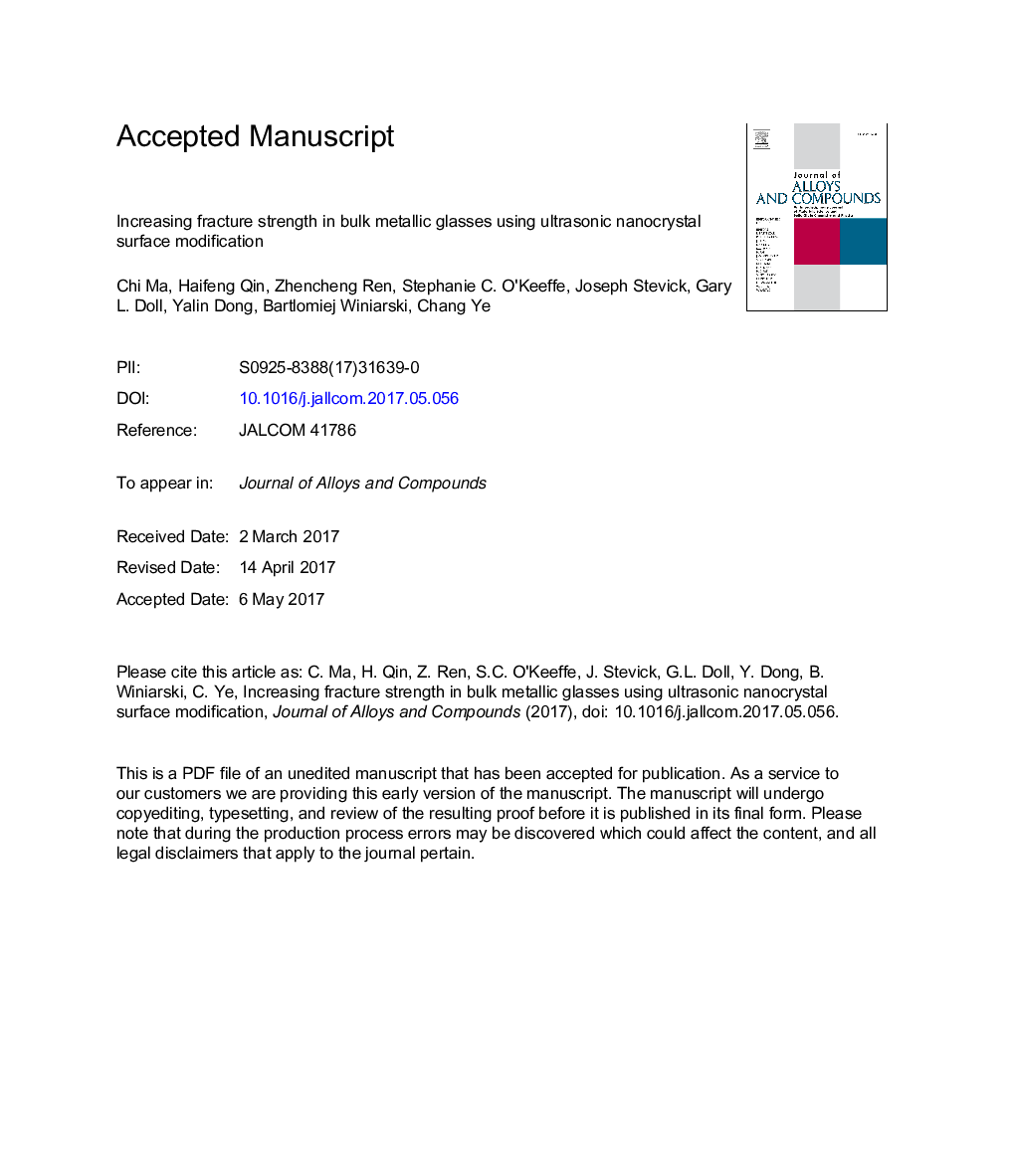| Article ID | Journal | Published Year | Pages | File Type |
|---|---|---|---|---|
| 5459447 | Journal of Alloys and Compounds | 2017 | 19 Pages |
Abstract
Microstructure inhomogeneity is imparted into the surface of a Vit1b Zr-based bulk metallic glass (BMG) using ultrasonic nanocrystal surface modification (UNSM). As a result, compressive residual stresses with a maximum magnitude of 1130Â MPa were induced in the near-surface region. Substantial improvements in both fracture strain and strength were observed for the treated specimen in three-point bending tests. The microstructure inhomogeneity and free volume generated by severe plastic deformation resulted in increased shear band density during three-point bending tests, which is evidenced by the vein-like pattern observed on the fracture surface of the treated specimen. Moreover, the enrichment of shear bands can cause the interaction between shear bands and can thus obstruct their propagation, leading to work-hardening behavior. High magnitude compressive residual stresses are also believed to impede and slow down the propagation of the shear bands. The synergistic effect of induced inhomogeneity, increased free volume and compressive residual stresses improves the fracture stress and strain of the UNSM-treated BMG.
Keywords
Related Topics
Physical Sciences and Engineering
Materials Science
Metals and Alloys
Authors
Chi Ma, Haifeng Qin, Zhencheng Ren, Stephanie C. O'Keeffe, Joseph Stevick, Gary L. Doll, Yalin Dong, BartÅomiej Winiarski, Chang Ye,
